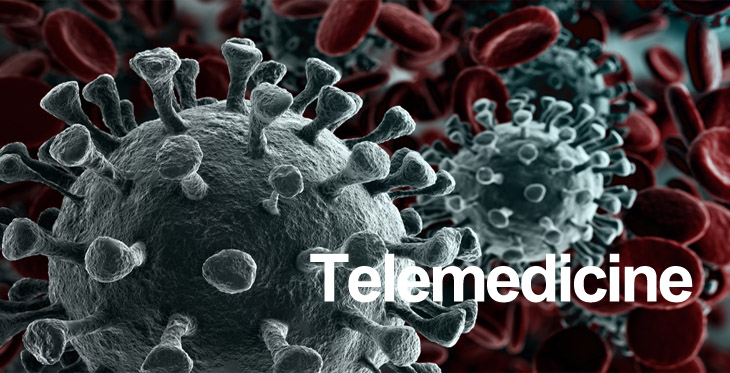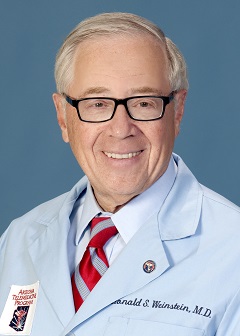Telemedicine's Roles In COVID-19 Pandemic Control

On January 30, the World Health Organization (WHO) categorized the 2019 Novel Corona Virus COVID- 19 disease outbreak “a public health emergency, of international concern, day after day “hitting closer to home.”
But on February 28 edition of Tech Trends offered more than a glimmer of hope:
“Robotic Medicine May Be the Weapon the World Needs to Combat the Coronavirus” And also in late February, Health IT Outcomes declared that “Telemedicine is proving to be an increasingly valuable tool, helping to reduce the spread of infection by providing first-line defense against the new coronavirus, COVID-19.”
This headline echoed another encouraging statement in the February 25 edition of Health IT Outcomes, which claimed that “Telemedicine is proving to be an increasingly valuable tool, helping to reduce the spread of infection by providing first-line defense against the new coronavirus, COVID-19.”
According to Tech Trends, “Telemedicine is playing a key role. Robotic devices and camera technology from companies such as InTouch Health and Zoom Video Communications are being used with coronavirus patients, and in broader communication during the crisis.”
Modern Healthcare hadreported “a host of concerns when the first U.S. patient with COVID-19 sought medical care at Providence Regional Medical Center in Everett, Washington. “The concerns were about providing high-quality care; keeping up-to-date on emerging information; and reducing other patients’ exposure to the virus; not to mention minimizing exposure among the hospital’s own medical staff.
“Infection control is an area where telemedicine carts proved essential,” The journal reported. “The carts allowed workers to roll video cameras and other telemedicine equipment into a patient’s room, so a physician could check in without physically being at the bedside.
“We had people outside the room talking to the patient, evaluating them with the (electronic stethoscope) and keeping communications lines open, said Dr. Todd Czartoski, chief medical technology officer at Providence.
“The hospitalists, infectious disease doctors and other specialists didn’t have to gown up and go in and out of the room multiple times a day.”
In addition, The U.S. Centers for Disease Control and Prevention (CDC) recommended healthcare organizations use telemedicine “to direct patients to the right site of care during the coronavirus outbreak.”
WHO also has urged healthcare organizations to “consider using telemedicine while evaluating suspected COVID-19 cases, as a way to minimize the use of personal protective equipment, including gloves and masks.”
Lawmakers agreed, and Congress included $500 million for the use of telemedicine services in an emergency aid package passed in early March. The appropriations bill also waived some Medicare restrictions on payment for telemedicine, to enable seniors to use remote services for coronavirus treatment. “Telemedicine has suddenly gone ‘mainstream’, in the fight against COVID-19. From now on, patients may demand that telemedicine service delivery be their standard-of-care. This would be true long after the COVID-19 pandemic is history,” states Ronald S. Weinstein, M.D., FCAP, founding director of the Arizona Telemedicine Program and a pioneer in the telemedicine field. Historically, Weinstein diagnosed one of the first telemedicine cases, decades ago, while a resident at the Massachusetts General Hospital, in Boston. He, and the future author Michael Crichton (“Andromeda Strain”, “Jurassic Park”, etc.), then a Harvard Medical Student early into his future career as a popular author, were among the first telemedicine trainees in the world, in 1968-1969. “Wars and pandemics are horrible by any measure. On the other hand, history tells us that they may leave groundbreaking societal advances in their wakes.” Weinstein added, “the COVID-19 pandemic might usher in a new generation of technology-driven societal transformations that have been waiting in the wings, set to go mainstream. As much as we dread COVID-19 now, it could become the driver for extending digital health to all segments of our society down the road,” states Weinstein.
“Telemedicine has suddenly gone ‘mainstream’, in the fight against COVID-19. From now on, patients may demand that telemedicine service delivery be their standard-of-care. This would be true long after the COVID-19 pandemic is history,” states Ronald S. Weinstein, M.D., FCAP, founding director of the Arizona Telemedicine Program and a pioneer in the telemedicine field. Historically, Weinstein diagnosed one of the first telemedicine cases, decades ago, while a resident at the Massachusetts General Hospital, in Boston. He, and the future author Michael Crichton (“Andromeda Strain”, “Jurassic Park”, etc.), then a Harvard Medical Student early into his future career as a popular author, were among the first telemedicine trainees in the world, in 1968-1969. “Wars and pandemics are horrible by any measure. On the other hand, history tells us that they may leave groundbreaking societal advances in their wakes.” Weinstein added, “the COVID-19 pandemic might usher in a new generation of technology-driven societal transformations that have been waiting in the wings, set to go mainstream. As much as we dread COVID-19 now, it could become the driver for extending digital health to all segments of our society down the road,” states Weinstein.
